CWGC Carols in the Guards’ Chapel, London
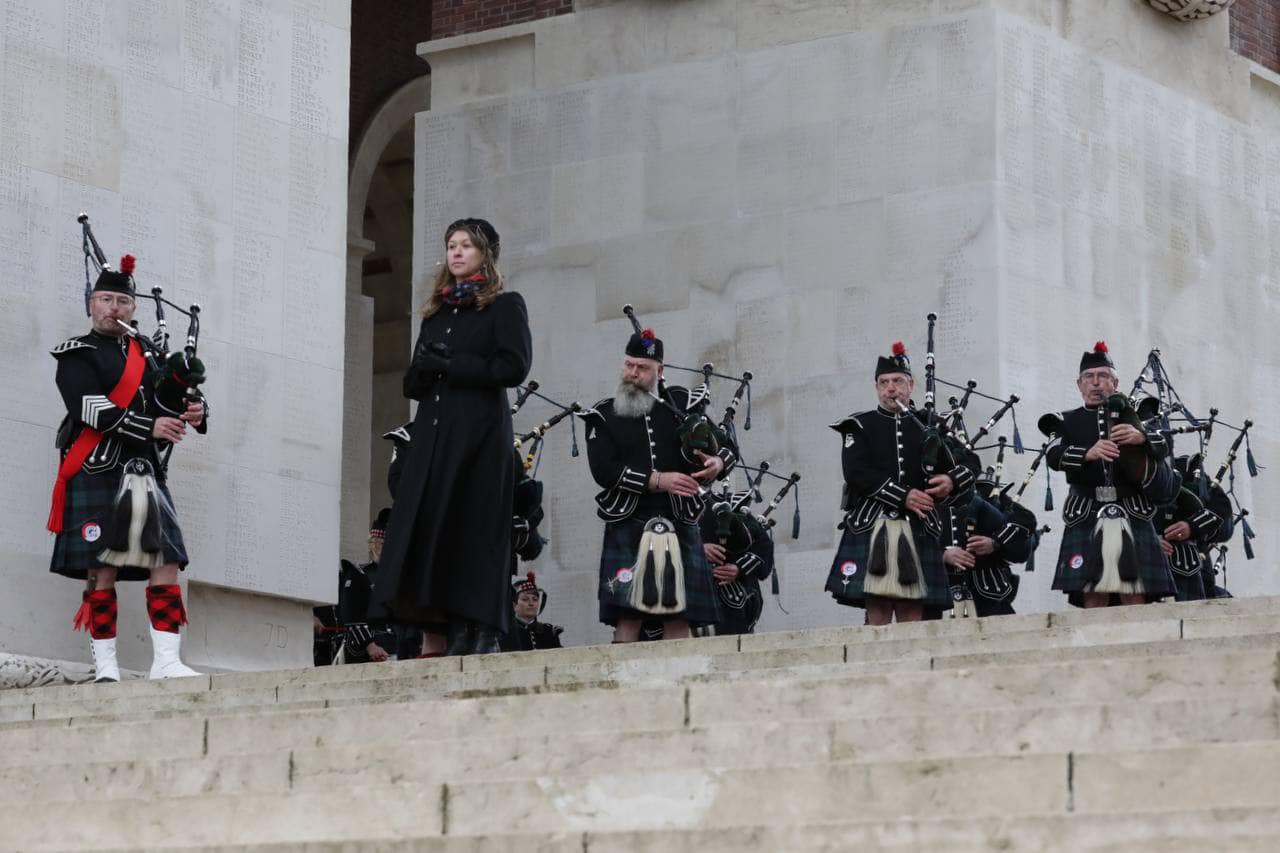
With the Samarobriva Pipes and Drums.
Source: Région Hauts-de-France
I’m really looking forward to joining Britain’s Got Talent’s winner Colin Thackery and actress Joanna Scanlan as guest performers at the Commonwealth War Graves Foundation’s carol service.
The carol service includes music by Campkin, Manz, and some well-known tradition carols. “Shining in the Snow,” a commission of Maddie Hunt, will also be performed. The singing is led by the choir of the Guards’ Chapel.
The foundation is the charitable arm of the CWGC. Do take a look at their website and the work they do. For more information and tickets, please visit this page.
British Remembrance Day 2024
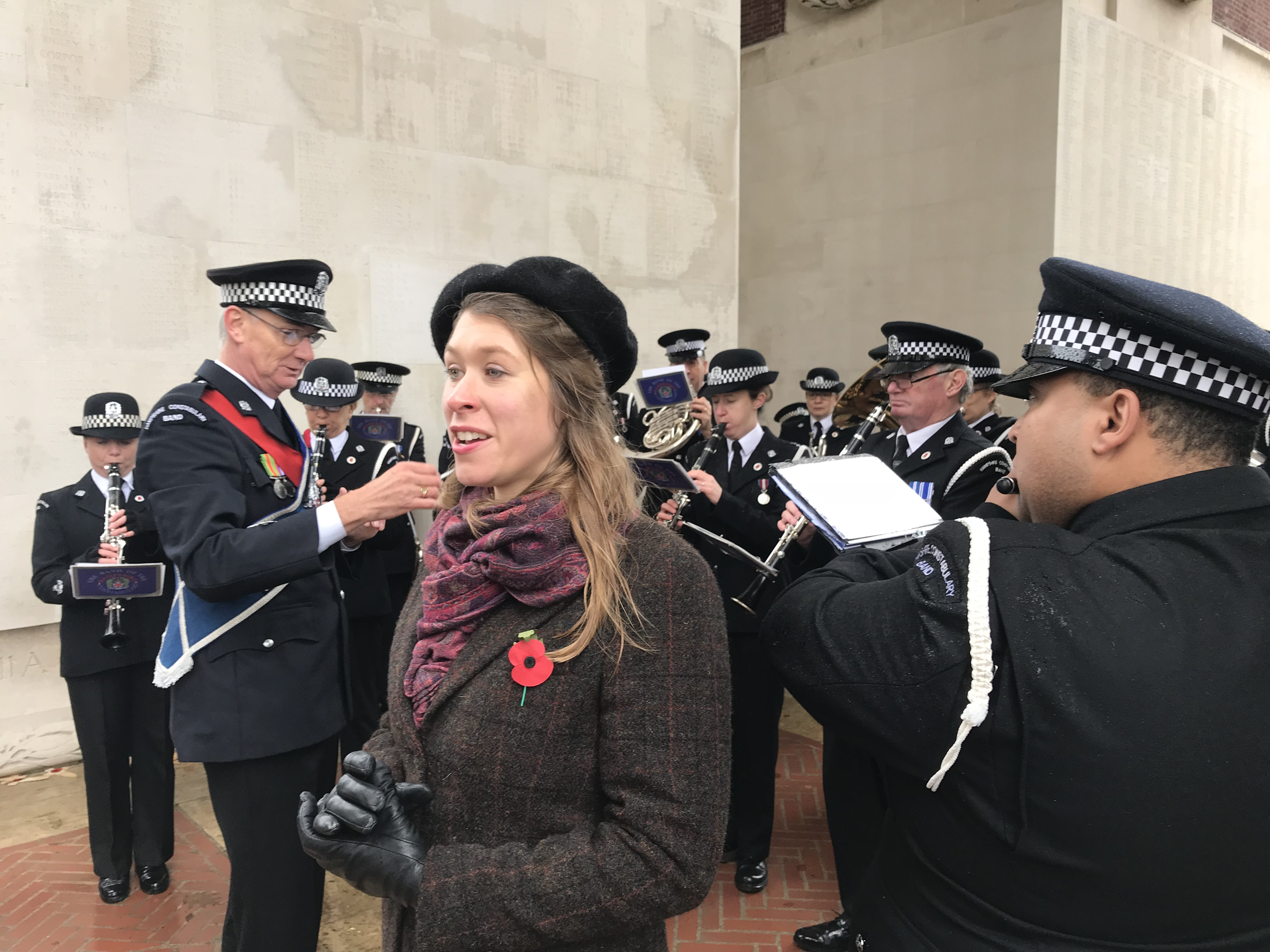
This year, I’ll return to the Somme, France, to sing remembrance ceremonies at the Ulster Tower, Northern Ireland’s national war memorial, and the Thiepval Memorial to the Missing of the Somme, organized by the Somme Association and the Royal British Legion.
In the afternoon, I will join the West Yorkshire Police Band at CWGC Tyne Cot cemetery in Belgium, where nearly 12,000 soldiers are buried, 8,369 of whom are unknown. A memorial wall lists the names of the missing soldiers.
The violence in the world today worries me deeply, and I hope that by pausing to take in the cost of war, we may also pause if we feel hatred or anger towards others and instead try to find peaceful solutions.
Interview on Dutch national television

I was recently interviewed on Dutch national television as part of the series ‘Petrus in het Land’ about my work singing for remembrance and veterans. I also sang “Danny Boy.”
uring the interview, I told the story of John Sleep, who insisted on attending the German remembrance ceremony in the Netherlands each year near to where he was shot and injured by a German tank. John believed that without reconciliation there could be no peace, and he encouraged other British War veterans to attend German remembrance ceremonies. He also supported the Monument of Tolerance.
I was grateful for the chance to share John’s ideas about the importance of remembrance and the role it can – and should – play in understanding the privilege of living in peace.
Commemorating the Battle of the Somme
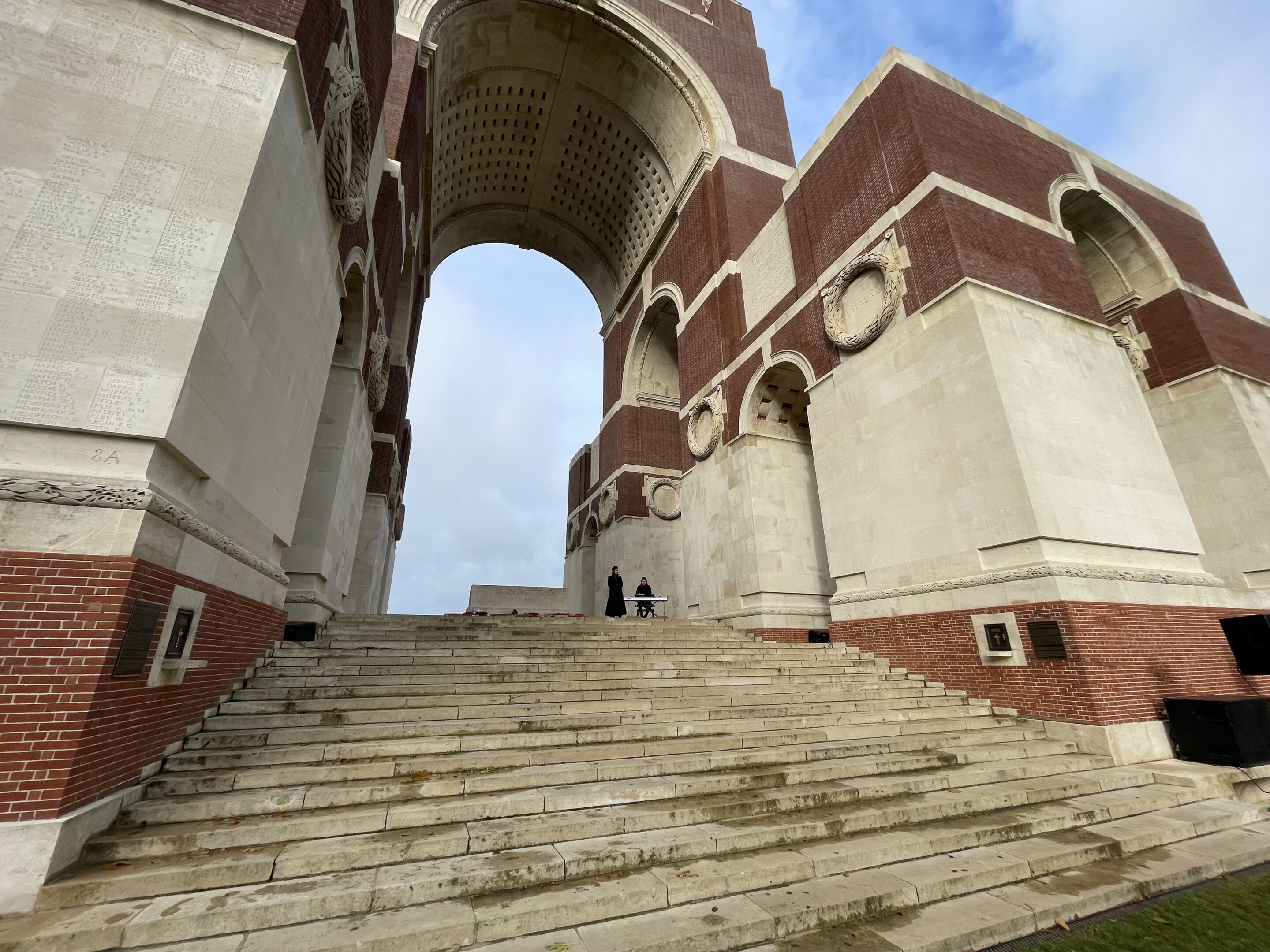
Even though I have been visiting the Somme to sing remembrance for nearly a decade, I still feel tremendous sorrow when I see the gravestones and names of the missing. For each name and for each grave there must surely have been families and whole communities of grieving people back home.
This year, on the anniversary of the first day of the Battle of the Somme, I led the singing at the Royal British Legion’s ceremony at the Thiepval Memorial to the Missing, a huge monument that is lovingly in the care of the Commonwealth War Graves Commission. I sang at the Ulster Tower, Northern Ireland’s national war memorial, and at the memorial to the 16th Irish Division in Guillemont.
D-Day 80 – Evening Concert at the British Normandy Memorial
The Band of the Royal Yorkshire Regiment gave a cracking sunset concert at the British Normandy Memorial in Ver-sur-Mer. It was really wonderful to join them in this spectacular setting to give an uplifting concert and to bring the veterans some cheer.
D-Day 80 – British Normandy Memorial
D-Day 80 – Bayeux Cathedral
On 5th June I joined the Band of the Royal Yorkshire Regiment, Hereford Cathedral Choir, and four pipe bands to provide music for a service of remembrance in Bayeux Cathedral in the presence of veterans and HRH The Princess Royal.
D-Day 80 – the Canadian Cemetery at Beny-sur-Mer
D-Day 80 – Veterans’ Parade in Arromanches
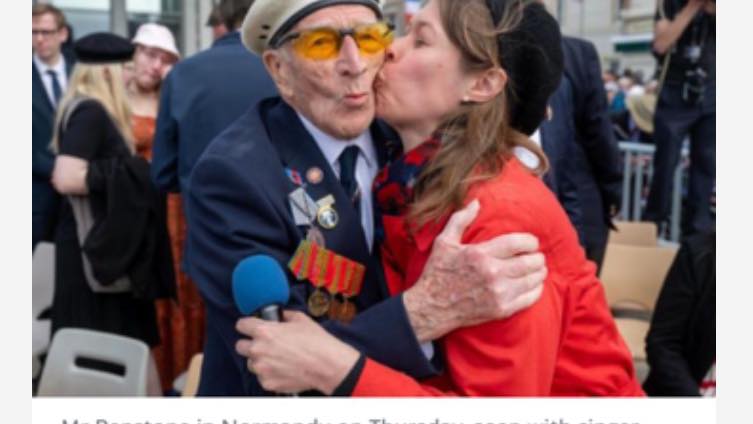
With Alec Penstone: Credit: Paul Grover for The Telegraph
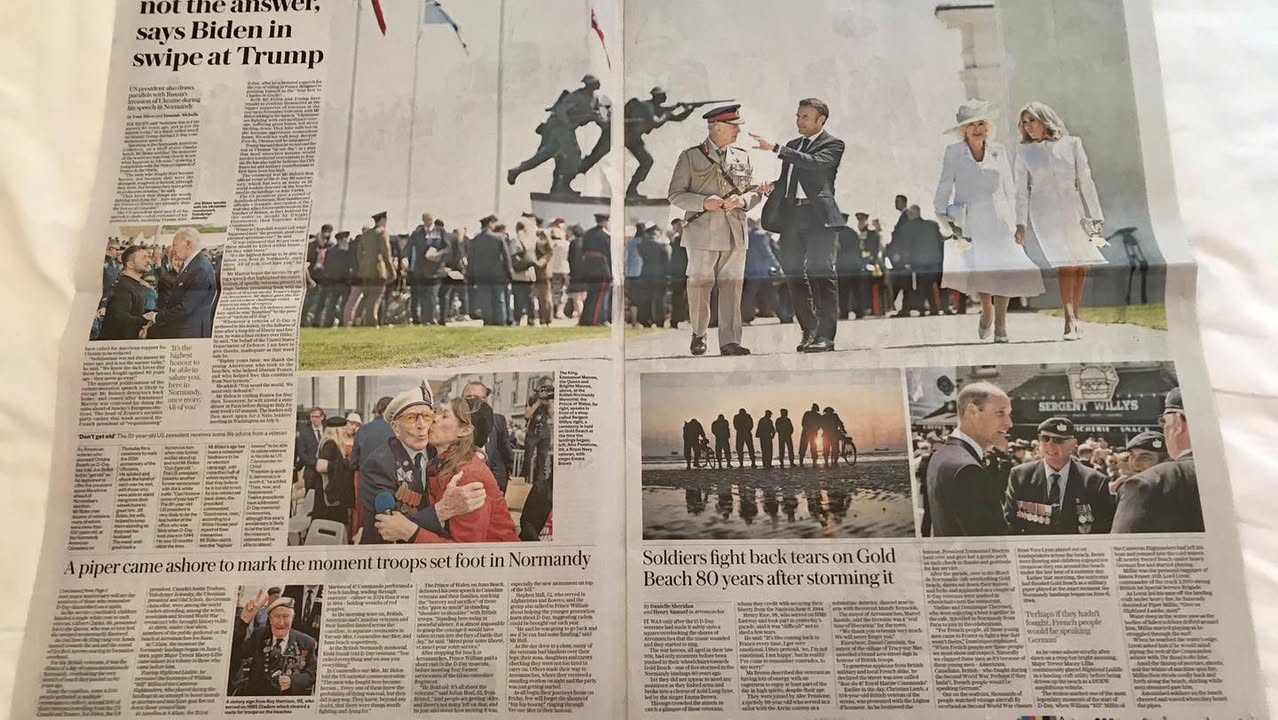
The Daily Telegraph
D-Day 80 – Bayeux War Cemetery
D-Day 80 – Ox and Bucks
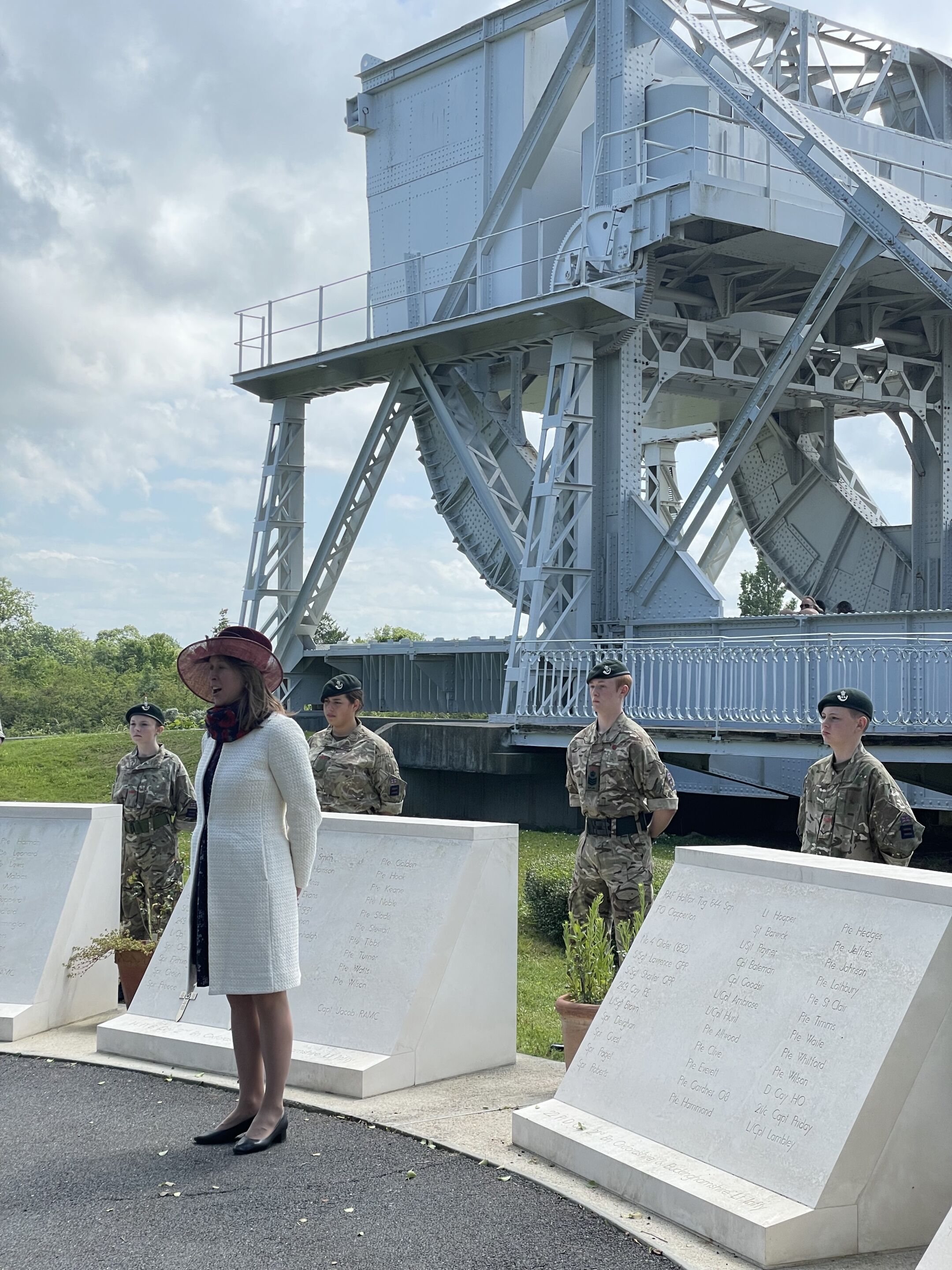
On 5th June I sang at the Glider Stones next to the original Pegasus Bridge, the memorial to the Ox and Bucks regiment who landed in the early hours of 6th June 1944. This was in the presence of the family of Major John Howard, who led the gliders that landed in Normandy just after midnight on 6th June. The men secured Pegasus Bridge, thus allowing the troops arriving on the beaches to move in land.
D-Day 80 – Colleville-Montgomery
On 5th June, I led the singing at a commemoration organised by the Spirit of Normandy Trust at Colleville Montgomery. Veterans, descendants, carers, friends, pilgrims, service men and women, and cadets all gathered at the statue of Field Marshall Montgomery.
D-Day 80 – Grand Vigil in Banneville
On 4th June we commemorated the fallen of the Battle of Normandy in CWGC Banneville cemetery. The Commonwealth War Graves Commission have organised a series of vigils in which all the their cemeteries in Normandy will be lit up during the week around the eightieth anniversary of D-Day. I joined the Massed Band of the Pegasus Memorial to sing during the ceremony. I also worked behind the scenes to organise the order of service and script.
D-Day 80 – Welcoming the veterans in Caens
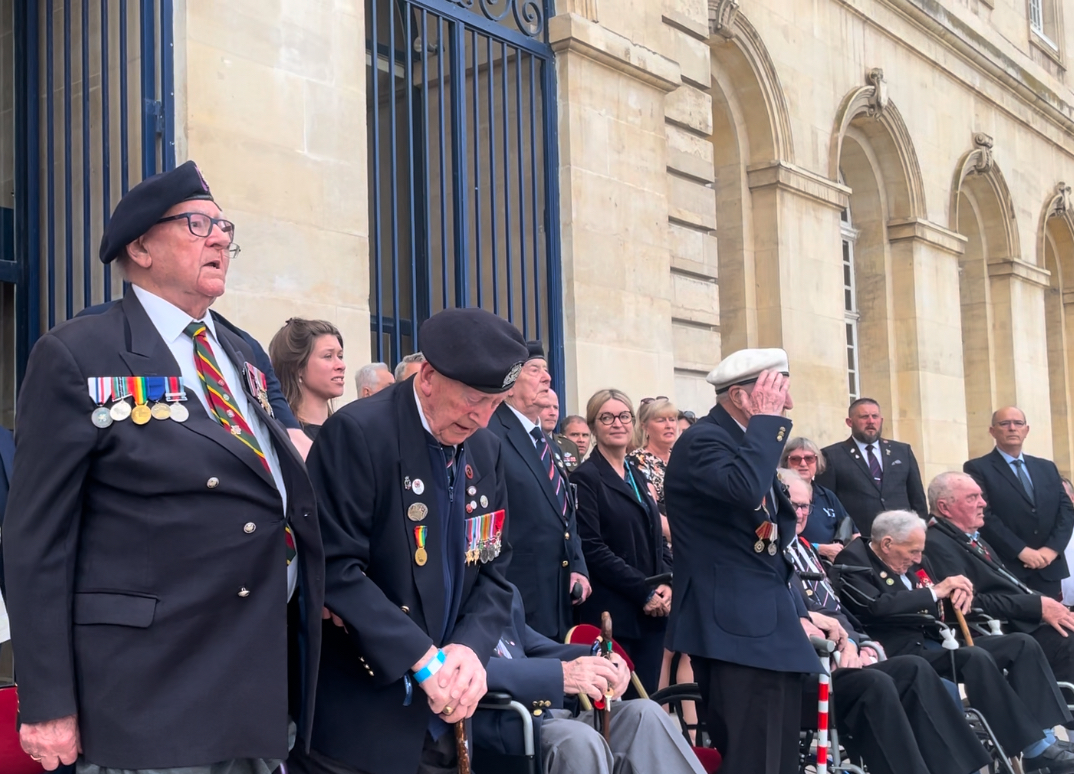
On 4th June, we welcomed a party of veterans travelling with Spirit of Normandy Trust to Caens. I led the British and French national anthems on the steps of the city hall.
D-Day 80 – Concert with the Band of the Royal Yorkshire Regiment
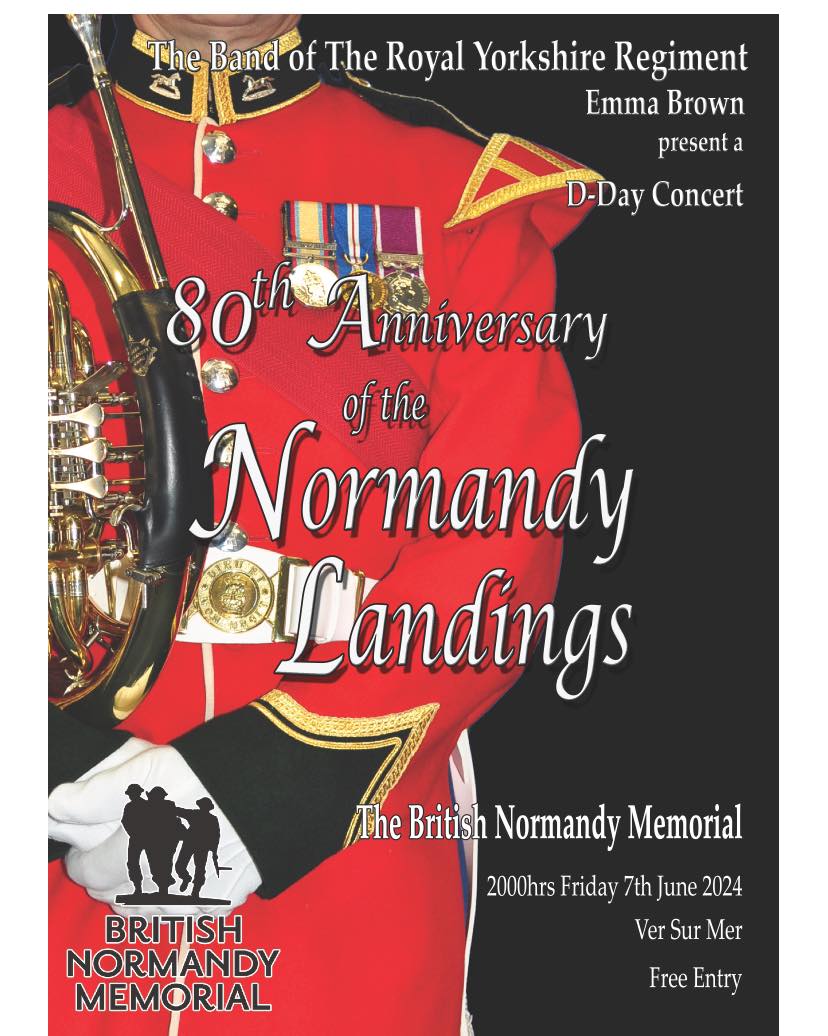
If you have made the remembrance pilgrimage to Normandy, do join us!
Friday, 7th June, 20:00, Ver sur Mer, France
The 80th Anniversary of the D-Day Landings
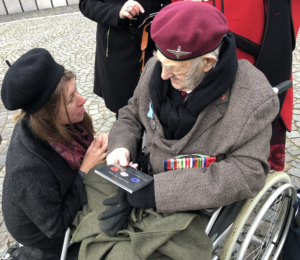
Singing for veterans is something close to my heart. I will be travelling to Normandy next week for various ceremonies to mark the 80th anniversary of the D-Day landings. These include British, French, and Canadian ceremonies in Caen, Colleville-Montgomery, Ranville, Bayeux, Beny sur Mer, Ver sur Mer and Grangues.
Please check my social media for stories, videos, and photographs as the week progresses.
Commemorating the Battle of Arras
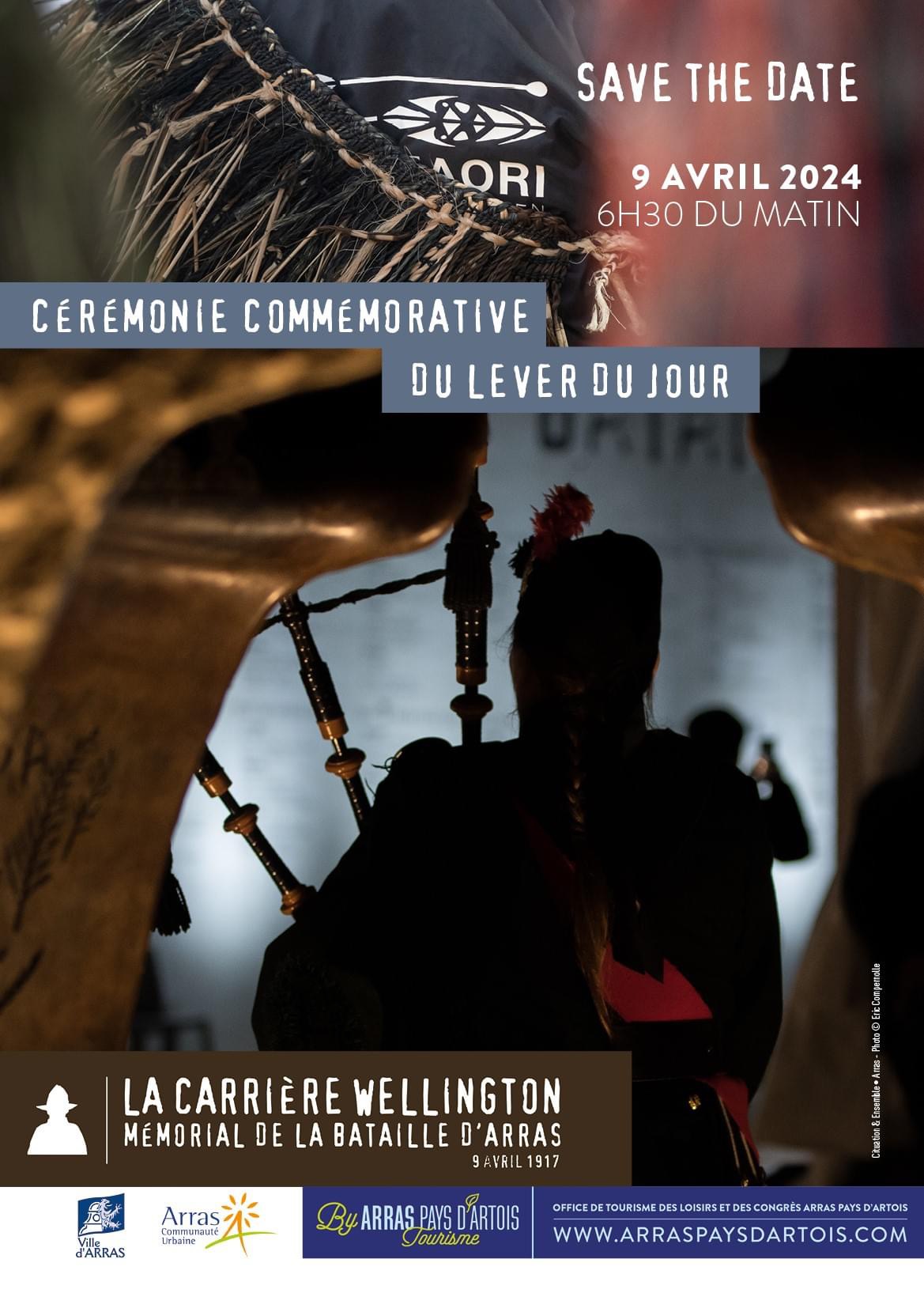
At dawn on 9th April I sang during a ceremony to commemorate the Battle of Arras. We gathered outside the Wellington Tunnels. Around twenty metres below us was a network of tunnels, which was expanded by largely Māori soldiers from the New Zealand tunnellers. Some of the tunnels are open for visitors today. Over 24,000 allied soldiers and officers sheltered there in 1917 before pouring out at dawn on 9th April in a surprise attack. The battle claimed over 250,000 casualties.
As the ceremony drew to a close, the sun rose and we heard birdsong and the gentle hum of Arras’s morning traffic. A peaceful contrast to the pandemonium and death of 107 years ago.
Remembrance at Vimy Ridge

Last Sunday I sang during a poignant vigil at Vimy Ridge, France. As the sun set, graves stones were lit and we gathered to remember the fallen in the Battle of Vimy Ridge.
The Battle of Vimy Ridge in 1917 was the first battle in which all four divisions of the Canadian Expeditionary Force fought together. The large number of Canadian casualties mean that the battle has a significance place in modern Canadian history.
The Canadian National Vimy Memorial at Vimy Ridge has become a place of pilgrimage. The graves remind us of the human cost of war. The forests around the cemeteries, which are riddled with explosives planted over one hundred years ago, remind us of the cost of war on non-human nature.
For more information about the memorial, please visit the Friends of the Canadian Vimy Monument website.
CWGC Christmas Carols
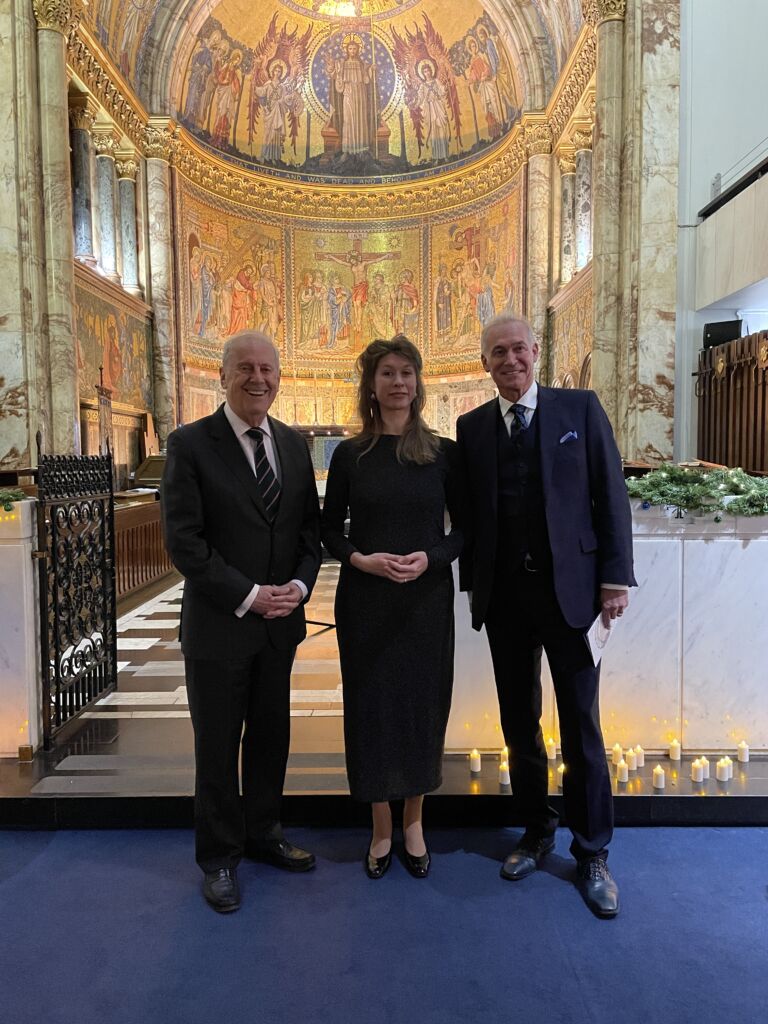
With Gyles Brandreth and Dr Hilary Jones. Photo: CWGC
Last Wednesday, I joined Gyles Brandreth and Dr. Hilary Jones to perform in the Guards’ Chapel, London, for the Commonwealth War Graves’ Foundation‘s Christmas carol service.
The foundation is the charitable arm of the war graves commission. Its aims include raising awareness of the work of the CWGC and the stories behind the graves so that no one is forgotten. It also raises funds to support the CWGC in caring for our war dead. Please consider donating to help their work.
For more photographs and information, please visit this webpage.
Remembrance Day: Ysselsteyn

Last Sunday was Volkstrauertag, Germany’s remembrance day. In the German war cemetery in Ysselsteyn, the Netherlands, we stood still for the victims of conflict, surrounded by the graves of over 32,000 people.
It was an honour to sing and to be silent.
The Thiepval Memorial to the Missing of the Somme
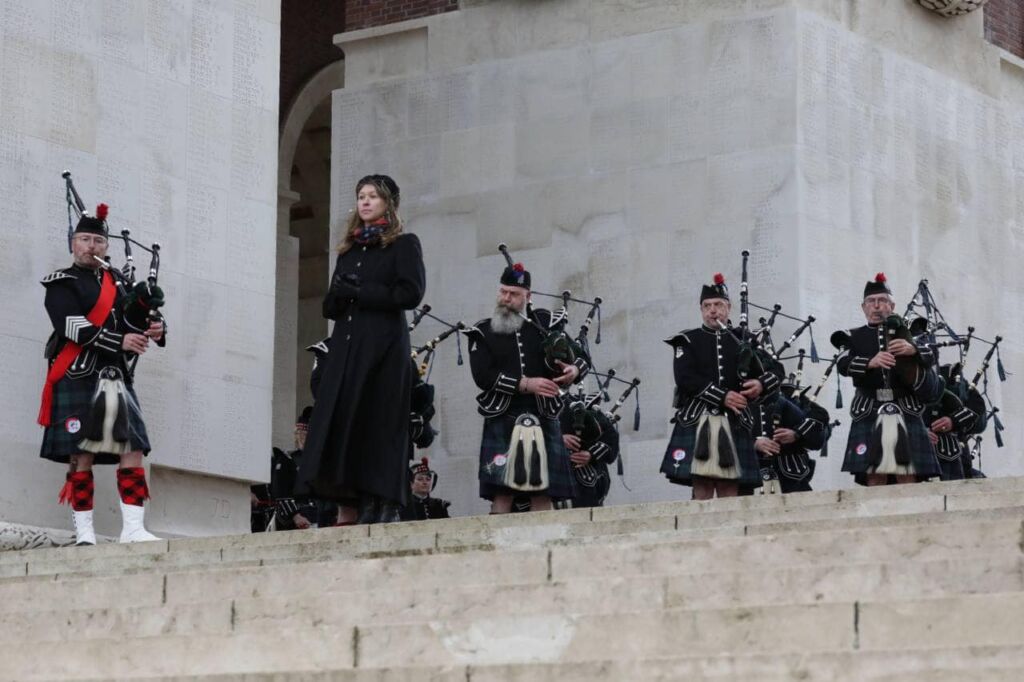
With the Samarobriva Pipes and Drums.
Source: Région Hauts-de-France
On Saturday, 21st October, the Thiepval Memorial was reopened after careful and loving restoration by the Commonwealth War Graves Commission. It was a deep honour to sing at the opening ceremony. Pianist Lieselotte van Tol and I performed music linked to the Battle of the Somme. The event marked the 90th anniversary of the memorial, and the listing of the memorial, along with other war graves on the Western Front, as a UNESCO World Heritage Sight.
Commemorating D-Day, 79 years later
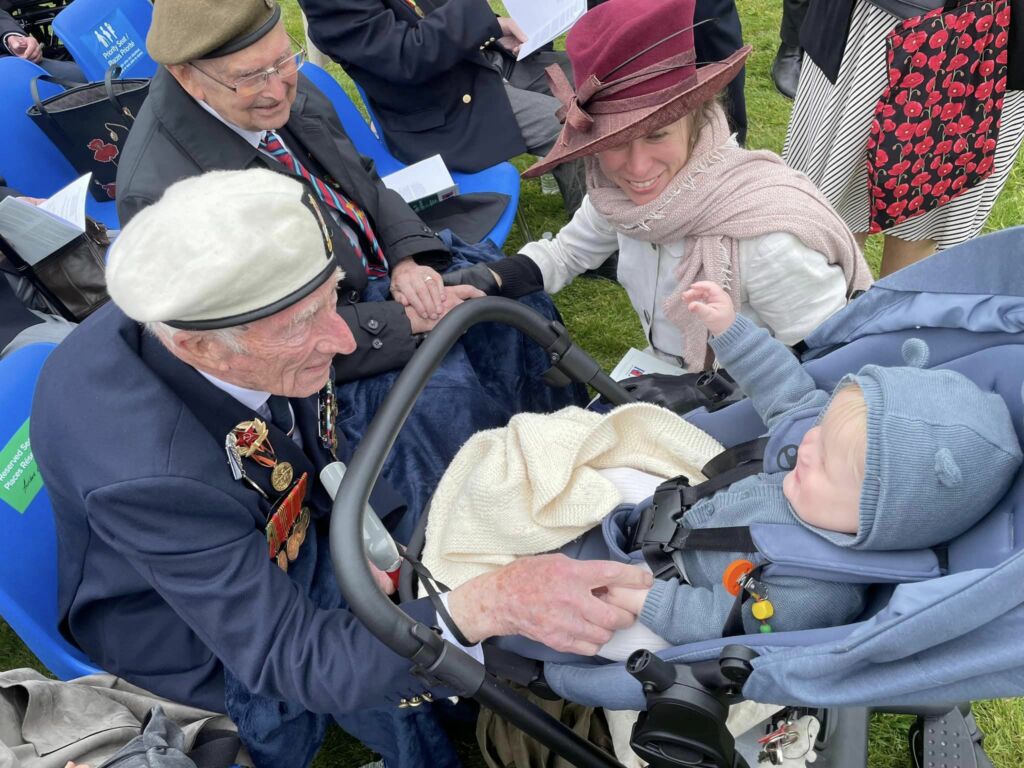
“This is what we did it for, this makes it all worth it: you’re free, little man.” There’s almost a century age difference between veteran Alec Penstone and our son. They met in Bayeux Cemetery, just before the Royal British Legion’s service of remembrance for the 79th commemoration of D-Day.
This year was our seventh trip to Normandy to support the commemorations of the D-Day landings. I was touched to see that there were more veterans present than in 2022, just after the COVID lockdowns. And yet it was also sad to notice those who had no made the pilgrimage.
My first ceremony was in Vauville, at a single grave of a young soldier who had been killed crossing the road to deliver a message. His senior officer had visited the grave annually after his death, and then the family of the senior officer continued to make the pilgrimage, and now the residents continue the tradition. It was moving and intimate to sing at a single grave and to focus on a single story: a contrast to the ceremonies in larger cemeteries where it is difficult to process the sheer number of casualties.
The Spirit of Normandy Trust gave their annual ceremony at the statue of Field Marshall Montgomery in Colleville-Montgomery, where I joined Jedburgh Pipe Band. The grandson of Montgomery, Viscount Henry Montgomery, was present and spoke before the ceremony.
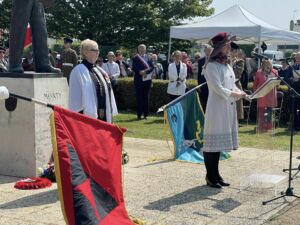
The ceremony at the statue of Field Marshal Bernard Montgomery, organised by the Spirit of Normandy Trust.
In the evening, I sang at the midnight ceremony of the family of Major John Howard, the man who commanded the six gliders which landed during the night before 6th June, in order to capture two bridges so that the troops landing on the beaches could move in land. The beauty of this ceremony lies in its simplicity. The Ox and Bucks veterans used to meet at the landing place together with Major Howard and share their memories of that terrifying night. After Howard’s death, the family played a recording of one of the evenings, in which one hears Howard’s description and the reaction of the men. This year, Ben Wallace, Secretary of State for Defence for the U.K., and French Defense Minister Sébastian Lacornu attended the ceremony.
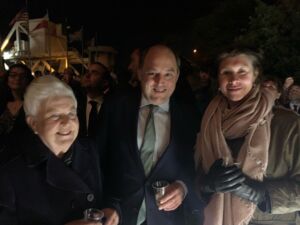
With Secretary of State for Defence Ben Wallace, and Penny Howard Bates, daughter of Major John Howard.
In Bayeux Cemetery, the final resting place of over 4,200 people, the Royal British Legion had their annual ceremony. I joined the British Army Band Catterick to lead the hymns and to sing ‘Abide with Me.’ Although I have sung this song countless times, it was quite a challenge because it followed first-hand accounts from the veterans. Stan Ford described the sinking on his ship, HMS Fratton.
“HMS Fratton sank in four minutes, taking with her 31 of the crew of 80. I was lucky when so many of my shipmates were not and I often ask myself why me? HMS Fratton still lies about a mile off of Arromanches and I will always remember the crew that I served with, and I will keep coming back to Normandy as long as I can to do so.”
Mr. Ford received spontaneous applause after this speech.

Singing with the British Army Band Catterick in CWGC Bayeux cemetery.
In Arromanches, I joined the Band of Liberation for an outdoor concert. At the veterans’ parade and remembrance ceremony, on request of Adrian Cox, himself a former chorister, I sang “The Silver Swan” by Gibbons, a beautiful melody and a thought-provoking text. Behind us, in the sea, the debris from the landings is still visible.
On 7th June, in Grangues, 44 Canadian airmen are commemorated each year. Some died in a crash, others were taken prisoner of war and shot in the castle grounds. The village remembers these men alongside the residents who died in the war effort.
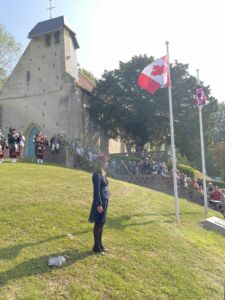
Leading the national anthems in Grangues.
In the afternoon, a memorial was unveiled to the Glider Regiment: the only memorial in France. The Glider Regiment brought soldiers, equipment and supplies to France. Without them, the war effort would certainly have failed. Since we no longer use gliders, their work risks being forgotten. I hope that the memorial will help their legacy last.

With veteran and author Mervyn Kersh.
Commemorating the Dutch Merchant Navy
On 4th May, Dutch Remembrance Day, the Dutch Merchant Navy association launched a website with a database of the stories of over 19,500 men and women who served in the Merchant Navy during the Second World War.
In the presence of descendants of the seamen, HRH Princess Margriet of the Netherlands, Mayor Ahmed Aboutaleb and MP Mark Halbers, Minister of Infrastructure and Water Management, we learned more about the men and women who joined the war effort. Descendants told the stories of their ancestors.
I joined the Douane Orkest to sing hymns and songs during the ceremony, under conductor Björn Bus.
When the website was launched, boats in the harbour sounded their fog horns. For a brief moment, it felt like the desperation of a civilian vessel, manned by people not trained for war, making one last cry before steaming into battle. War is tragic and all are victims, and my heart went out to the men and women who fought against all odds so that those who remained could live free from tyranny.
